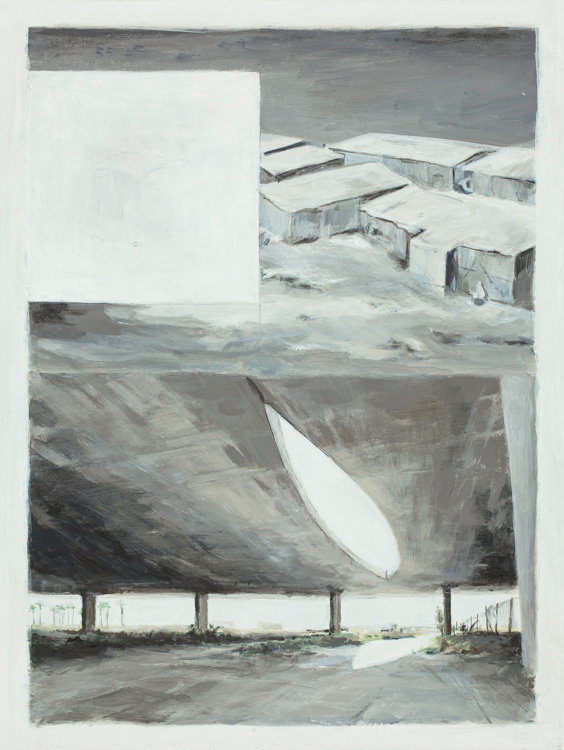The Reappropriation of a Simple Form (2014)
The Reappropriation of a Simple Form is made in the framework of the Suspended Spaces project.1
The Reappropriation of a Simple Form starts from the idea of conflictual realities to be found in the historical as well as present sociopolitical contexts in which Oscar Niemeyer’s (unfinished) International Fair (1960’s) in Tripoli (North Lebanon) was realized. Since the outbreak of the civil war in Lebanon (1975) further construction had stopped, leaving the place like a huge empty lung (70 hectares / 175 acres) in a body of dense urban fabric. The International Fair was never used according to the functionality for which it was planned and designed. Its dysfunctional void and the archetypical architectural artefacts, illustrating the architect Niemeyer’s disciplinary maturity at that time, are no more than an exceptional bookmark of untouched modernist heritage. But in the same time, its museum-like appearance in a tense and troubled area in the Middle East, opens up questions relating its autotelic character.
The Reappropriation of a Simple Form highlights a questioning of dual and conflictual realities. Juxtaposing the void in space and time with the turbulent reality of the actual ongoing Syrian conflict, de facto entering Tripoli and the International Fair. Last year (2013) the UNHCR has set up a refugee registration center inside a glass-covered part of the main hall on the fairground, that was supposed to host the international exhibitors of the Fair. Now a minor part of the hall is used to temporarily host refugees, letting the UN to give an answer to the ever growing number of Syrian civilians fleeing the war. Last month (April 2014) the UN Agency for refugees reported the “devastating milestone” of one million Syrian refugees, registered in Lebanon. This makes of Lebanon the country having “the highest per capita concentration of refugees worldwide”, the UN says.2
It is an almost symbolical fact that the boomerang shaped roof of Niemeyer’s hall now gets a social and maybe ethically accepted function by sheltering war-refugees from Syria. It adds to the striking fact that in the past, the site only had changed its autotelic dysfunctionality for a functional use during another war, being the 15 years long internal civil war in Lebanon. Then, “the Fair buildings were successively occupied by the different militias controlling the city. It is even claimed that the Syrian army used them to store munitions.”3
By juxtaposition and superposition of archetypical image and form The Reappropriation of a Simple Form imagines a re-interpretation and displacement of the concepts of public, private, memory, present, critical emergency and heritage space.
size (300 mm x 400 mm)
Acrylic on MDF (3 mm)
- The latest step of this project was the Symposium named Regarding Suspended Architecture in Lebanon (Beirut, April 2013) to which about thirty French, Lebanese and international artists and theoreticians took part. Point of departure: Oscar Niemeyer’s unfinished International Fair (at the end of the 60s in Tripoli, North Lebanon).
The experience of the visit to and the symposium focusing on this site of extraordinary interest is leading the Suspended Spaces collective into a new direction: Brazil. Homebase of Oscar Niemeyer.
Although the Suspended Spaces project is balancing geographically in between two places (Lebanon and Brasil), the concept of Modernism is the binding point of departure for theoretical reflection and artistic creation, surpassing the specificity of these places.
The Suspended Spaces collective wants “to position Oscar Niemeyer’s peculiar situation in the context of a modernity and a modernism that not only embody the notions of cultural anthropophagy, interracial mixing and diversity, but also generate utopia aspirations triggered by the idea of progress and universalism, in a conflictual and unstable environment.” - “Million Syria refugees registered in Lebanon”, article www.bbc.com, April 3, 2014
- OSCAR NIEMEYER’S INTERNATIONAL FAIR PROJECT IN TRIPOLI, LEBANON (1968-1974), text by Jad Tabet, www.suspendedspaces.net
- #4
- #3
- #2
- #1



